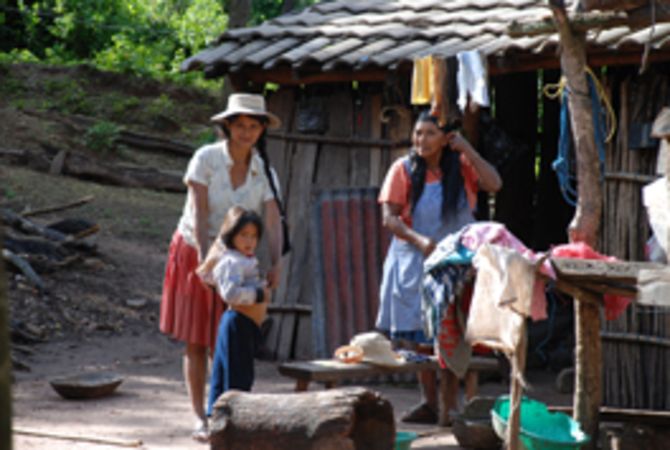DAHW´s focus is not mainly on Bolivia, even though the work there offers an image of aid worldwide: it is only in the hospital of Monteagudo that leprosy, tuberculosis and neglected tropical diseases are treated. These are diseases of poverty. Bolivia is a very poor area in South America and Chuquisaca is one of poorest provinces ever.
Since the hospital’s foundation in 1965, DAHW has been supporting the local work, initially focussed on leprosy and skin diseases. Just like in many other countries, there were a great number of patients presumed to have leprosy, but suffering from other skin diseases with similar symptoms. Today, the dermatological hospital has the status of a prestigious clinic and is responsible for almost 100,000 inhabitants in the administrative district. Furthermore, it is a national reference centre for skin diseases like leprosy. Dr. Abundio Baptista, a DAHW doctor, comes several times a year from Sucre, the province capital, to train medical staff. There are around 150 new cases of leprosy in Bolivia a year.
However, Dr. Abundio Baptista is more worried about other, almost forgotten, diseases: Leishmaniasis, for instance, is wide spread here. The disease, which is transmitted by mosquitoes just like elephantiasis, does not often lead to death, but to painful and disfiguring abscesses on the skin. Elephantiasis patients also suffer from painful swelling, hence the name of the disease.
Dr. Apocada examines patients at the road side. They often wait for him there because they know well that he would not ever drive straight past. Photo: Stich / DAHW
Then there is Chagas, a childhood disease that happens to appear only in Latin America and nowhere more often than in the region of Monteagudo. More than 90% of the region’s population is infected by this pathogen, which is transmitted by bugs. “Chagas is a synonym for disease of poverty”, says Prof. Dr. August Stich, Board member of DAHW and head doctor in the department of Tropical Medicine in the Medical Missionary Institute in Würzburg. In Bolivia more than 50,000 people get Chagas every year and more than 15,000 die from it.
The bugs, called “Vinchucas”, live in the shabby huts of their victims. Initially, not the human being but the cattle inside the huts are targeted. Every night, the Vinchucas come out of cracks in the non-plastered walls looking for their victims.
Monteagudo is located in the poor south of Bolivia - far away from any bigger city.
As many people in poor rural regions live together with their cattle under one and the same roof, the number of people affected is very high. Especially the shabby huts in those poor regions provide an ideal living space for the nocturnal bugs. During the day, the Vinchucas hide in cracks of bricks or wooden boards, at night the extended family and its cattle sleep in the hut and are an easy target for the bugs.
The problem is not the proboscis. It is the faeces of the bug that transmit the pathogen, which may survive for years. According to Mr. Stich, a specialist in Tropical Medicine, there are other possible modes of transmission: “Pregnant women transmit the pathogen to their unborn children and mothers through their milk to the infants, this is just as certain as transmission by inadequately controlled blood reserves. Furthermore, it can be transmitted by contaminated food or other modes of transmission, which seem possible to us, but have not yet been explored due to a shortage of means”.
Treatment is only possible within the first two of four stages of the disease. “This means that members of our local medical staff have to be trained intensively. The earlier a diagnosis can be made the greater is the chance of successful treatment. In the later stages, the disease is not curable, as far is currently known”, says the medical consultant of the DAHW Board.
In December 2011, Professor Stich went to Monteagudo to explore Chagas disease more closely as the doctor from Würzburg is focused especially on finding a method to prevent it. At the moment, he can only dream about a vaccine as the Bolivian Government is not in position to cover a share of the immense costs for its development. Those who would be able to do so, do not want to help. Just like in cases of other diseases of poverty, the patients cannot pay for medication themselves. Research funding would therefore not be an economic investment, but in the people living there.
Overview Annual Report 2011



